Understanding Dental Veneers Insurance
Coverage Overview
When considering dental veneers, it’s important to understand how your insurance may cover their costs. Generally speaking, dental veneers are perceived as a cosmetic enhancement rather than a necessary treatment. As a result, most insurance providers typically do not include veneers in their coverage plans unless they are classified as medically necessary. For instance, if a tooth has been damaged due to an accident or injury, some plans may provide coverage for veneers to restore both function and aesthetics. According to Humana, this type of coverage is quite limited.
Insurance coverage can vary significantly between different providers and plans. Review your specific policy to determine what is included regarding cosmetic procedures like veneers. Some plans may offer partial coverage under specific circumstances while others may entirely exclude it.
| Insurance Provider | Coverage for Veneers | Remarks |
|---|---|---|
| BCBS | Limited coverage | Medically necessary reasons only |
| MetLife | Varies | Must consult provider |
| Aetna | Possible partial coverage | Dependent on medical necessity |
| United Healthcare | Typically no coverage | Focus on restorative needs |
Medical Necessity Consideration
Medical necessity plays a crucial role in determining veneer coverage. If your veneers are deemed essential for addressing serious dental issues or restoring health—such as extensive enamel erosion or structural damage from trauma—your insurance carrier may be more inclined to provide coverage. According to Goyal Dentistry, cases like these can sometimes lead insurance to approve claims for veneers.
Insurance companies typically conduct an evaluation regarding the necessity of veneers by comparing them to less expensive alternatives. For example, if your dental health could be addressed through fillings or crowns, the insurer might prefer those options over veneers, which are more costly. Therefore, discussing all potential treatment methods with your dentist is essential to navigating your coverage effectively. Additionally, understanding how your insurance views the distinction between cosmetic enhancements and necessary restorations can help in planning your dental care, especially if you are considering veneer options alongside other treatments.
For personalized insights regarding your dental care costs and coverage, consult with both your dentist and your insurance provider. They can assist you in determining your best options to achieve the aesthetic results you desire while maximizing your available insurance benefits. For more details on coverage related to dental restorations, explore options like full mouth rehabilitation with root canals covered for comprehensive care planning.
Factors Influencing Veneer Coverage
When considering the coverage for dental veneers, several factors come into play that can significantly affect whether your insurance will cover the procedure. Understanding these factors can help you navigate the nuances of your coverage effectively.
Cosmetic vs. Restorative Needs
Insurance generally classifies veneers as a cosmetic treatment, which means they often aren’t covered under most dental plans unless deemed medically necessary. Cases that may qualify for coverage include:
- Severe enamel erosion causing tooth sensitivity and pain
- Trauma or injury resulting in significant structural damage to the tooth
- Severe misalignment or bite issues affecting oral function
In these scenarios, dental insurance providers may view veneers as part of restorative dentistry rather than purely cosmetic enhancements (Dental Clinics of Texas). Thus, if your veneers are meant to address functional or structural issues, your insurance might cover the costs.
| Condition | Potential for Coverage |
|---|---|
| Severe enamel erosion | Yes |
| Trauma or injury affecting tooth structure | Yes |
| Aesthetic improvement only | No |
Insurance Policy Variations
Not all dental insurance plans are created equal, and variations can affect how veneers are covered. Some plans may have distinct categories such as restorative or major care that include veneers, but this can differ widely between providers (Casey Dental).
When assessing your coverage, it’s important to review your individual policy carefully. Key considerations include:
- Policy Type: Does your plan categorize veneers under cosmetic or restorative care?
- Coverage Limitations: Are there specific conditions listed that qualify veneers for coverage?
- Provider Network: Are you using in-network or out-of-network providers? Coverage may differ based on provider status.
For example, some plans, such as those from BCBS or MetLife, may include specific provisions for veneers under restorative services, while others might not (Americo Dental Veneer Providers).
Understanding these factors can empower you to approach your insurance provider with the necessary information to help justify your treatment costs. For further insights on specific plans, you may want to look into veneers covered by delta dental or other insurance options that may fit your needs.
Assessing Veneer Cost with Insurance
Understanding the costs associated with dental veneers is crucial, especially when navigating your insurance coverage. Several factors can influence the overall expenses, and how your insurance handles in-network versus out-of-network providers can significantly affect your final bill.
Cost Factors
The cost of dental veneers depends on various key factors, such as:
- Material Type: The use of porcelain or composite resin can affect the price. Porcelain tends to be more expensive due to its durability and aesthetic appeal.
- Procedure Complexity: If additional preparatory work is needed, such as tooth reshaping, this can raise the overall cost.
- Number of Veneers: The more veneers required, the higher the total cost will be. A larger number might also lead to additional preparation expenses.
- Geographic Location: Pricing can vary depending on where you live, with urban areas typically having higher dentist fees.
- Dental Professional’s Experience: Highly skilled dentists might charge more due to their expertise.
Below is a simplified table showing average costs based on some of these factors:
| Factor | Average Cost Range |
|---|---|
| Porcelain Veneers | $1,125 – $2,750 per tooth |
| Composite Veneers | $800 – $1,500 per tooth |
| Additional Prep Work | $100 – $500 per tooth |
For more insights, you can refer to recognized dental sources like Westfield Smiles.
In-Network vs. Out-of-Network Providers
When assessing your veneers cost with insurance, understanding the difference between in-network and out-of-network providers is essential. In-network dentists have agreements with insurance companies which allow them to offer services at reduced rates. This can mean lower out-of-pocket expenses for procedures like dental veneers (Westfield Smiles).
- In-Network Providers: They typically charge less due to negotiated rates with insurance companies. Therefore, you may pay a smaller portion of the total cost.
- Out-of-Network Providers: Visiting a dentist not covered by your plan can lead to higher expenses as your insurance may cover a lower percentage of the costs or none at all.
Consider the following:
| Provider Type | Coverage | Potential Out-of-Pocket Cost |
|---|---|---|
| In-Network | Higher coverage, lower costs | $500 – $1,200 per veneer |
| Out-of-Network | Lower coverage, higher costs | $1,000 – $2,500 per veneer |
It’s wise to verify your insurance plan details to determine coverage levels for both in-network and out-of-network services. For comprehensive insights into what’s covered, explore related topics like veneers covered by delta dental and does metlife cover porcelain veneers. Understanding these nuances will help ensure that you can make informed decisions regarding your cosmetic dental veneers insurance coverage.
Navigating Insurance Approval Process
Understanding how to navigate the insurance approval process for cosmetic dental veneers can help you optimize your coverage and minimize out-of-pocket expenses. This section explores the pre-approval steps and annual maximum limits that may affect your veneers insurance coverage.
Pre-Approval Steps
Before you begin the process of obtaining veneers, you should familiarize yourself with the pre-approval steps required by your insurance provider. The pre-approval process typically involves several key actions:
-
Consultation with Your Dentist: Schedule a consultation to discuss your dental needs. Your dentist will evaluate your situation and determine whether veneers are the best option for you.
-
Documentation of Medical Necessity: If your dentist determines that the veneers are medically necessary—such as for restoring function or structure due to decay, injury, or disease—you should work with them to prepare the necessary documentation. This may include clinical notes and photographs.
-
Submission of Insurance Claims: Your dentist will submit a claim to your insurance provider for pre-approval. Be sure they include all required information to support the necessity of the veneers.
-
Verification of Coverage: Follow up with your insurance provider to confirm the status of the pre-approval request. Understanding their criteria for evaluating necessity can be essential when discussing alternative treatments.
By taking these steps, you can help ensure a smoother approval process and a better understanding of what your insurance will cover.
Annual Maximum Limits
Most dental insurance plans have an annual maximum limit, which is the total amount the insurance will pay for your dental care within a year. This limit can significantly affect how much coverage you receive for veneers:
| Insurance Provider | Annual Maximum Limit | Typical Coverage for Veneers |
|---|---|---|
| Blue Cross Blue Shield | $1,500 – $2,000 | Varies based on necessity |
| MetLife | $1,500 – $2,500 | Partial coverage if medically necessary |
| Aetna | $1,000 – $2,000 | Limited to restorative needs |
| United Healthcare | $1,500 – $3,000 | May cover if functionally necessary |
The costs associated with multiple veneers can quickly add up, potentially exceeding these limits. Additionally, some policies may only cover veneers if they restore the function of teeth rather than for elective cosmetic purposes.
Be aware of these limitations when planning your veneer treatment, and consider discussing the options available with both your dental provider and insurance representative. For further insights into cosmetic dental veneers insurance coverage, you can explore our content on insurance that pays for chipped tooth veneers or veneers covered by delta dental.
Alternative Financing Options
When considering cosmetic dental veneers, it is essential to explore all available financing options to manage costs effectively. While insurance coverage may be limited for veneers, there are several practical alternatives that can help you afford your dental care.
Dental Financing Plans
Dental financing plans are designed specifically to help patients cover the cost of dental procedures that may not be fully covered by insurance. These financing options often include low or no-interest payment plans that allow you to pay for your veneers over time. Available options sometimes include:
- CareCredit: A healthcare credit card that can be used for dental procedures, offering promotional financing options.
- Medical loans: Personal loans specifically for healthcare expenses, which can offer lower interest rates compared to credit cards.
| Plan Type | Interest Rate | Payment Term |
|---|---|---|
| CareCredit | 0% for 6-24 months | Flexible repayment |
| Medical Loans | Varies by lender | 1-7 years |
These dental financing plans can provide immediate access to your desired treatments without the burden of paying the entire cost upfront. It is advisable to compare different plans and their terms to find one that suits your financial situation.
Health Savings Accounts
Health Savings Accounts (HSAs) and Flexible Spending Accounts (FSAs) are valuable tools for managing healthcare expenses, including cosmetic dental procedures like veneers. HSAs allow you to save pre-tax dollars specifically for medical costs, which can help reduce your overall expenses. Here are some features:
- Tax advantages: Contributions to HSAs are tax-deductible, and withdrawals for eligible medical expenses are tax-free.
- Roll-over benefit: Funds in HSAs can roll over from year to year, which is not the case with FSAs where you might lose unused funds at the end of the year.
You can use these accounts to cover out-of-pocket costs associated with veneers, providing an excellent way to maximize your dental budget. Be sure to check with your plan administrator regarding eligible expenses and contribution limits. For more insights into managing dental procedures financially, consider reviewing information on dental implant treatment covered by aetna and similar resources.
By utilizing dental financing plans and health accounts, you can access the premium dental care you desire while maintaining financial stability.
Maximizing Veneer Longevity
Maintenance Tips
To ensure that your dental veneers last as long as possible, proper maintenance is essential. Here are some effective tips to help you care for your veneers:
| Maintenance Tip | Description |
|---|---|
| Regular Dental Check-ups | Visit your dentist at least twice a year for professional cleanings and evaluations. |
| Good Oral Hygiene | Brush your teeth at least twice daily and floss regularly to maintain gum health and veneer cleanliness. |
| Use Non-Abrasive Toothpaste | Opt for a non-abrasive toothpaste to avoid scratching the surface of your veneers. |
| Avoid Staining Foods | Limit consumption of foods and drinks that can stain your veneers, such as coffee, tea, and red wine. |
| Wear a Mouthguard | If you grind your teeth at night, using a mouthguard can protect your veneers from wear and damage. |
| Limit Chewing Hard Foods | Avoid hard candies and ice to prevent chipping or cracking your veneers. |
Understanding the importance of ongoing maintenance can greatly influence the longevity and investment value of your veneers. For additional information on maintaining your smile, please visit our page on dental restoration services covered by MetLife.
Lifespan Expectations
With proper care, dental veneers are designed to be a lasting solution for enhancing your smile, typically lasting between 10 to 15 years. Factors affecting the lifespan of your veneers include:
| Factors Affecting Lifespan | Impact |
|---|---|
| Hygiene Practices | Good oral hygiene significantly extends the life of your veneers. |
| Material Quality | High-quality veneers made from porcelain tend to last longer than composite options. |
| Lifestyle Choices | Habits like smoking can shorten the longevity of your veneers due to staining and gum health issues. |
| Dental Visits | Regular visits for professional cleaning and check-ups can help identify problems early. |
Understanding veneer longevity and maintenance is crucial when considering the cost of dental veneers with insurance, as effective care can maximize their lifespan and overall value (Goyal Dentistry). Engaging with your dental provider and following their recommendations will ensure your smile remains radiant and confident for years to come. If you want to explore more on the subject, check our articles on veneer coverage with Delta Dental and does MetLife cover porcelain veneers?.








